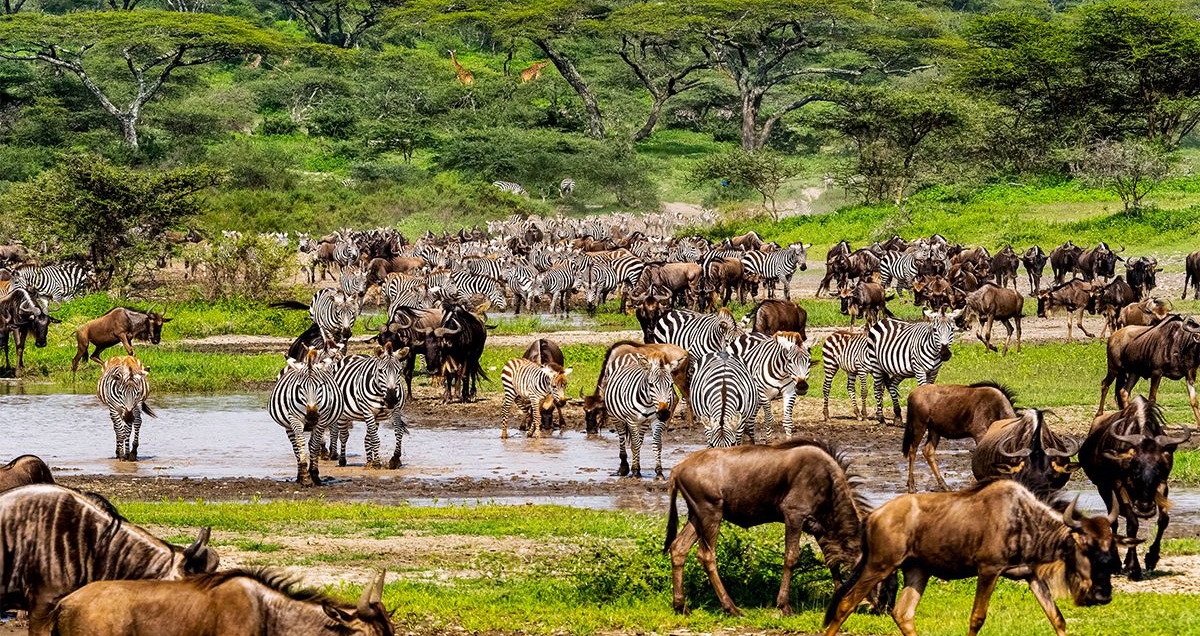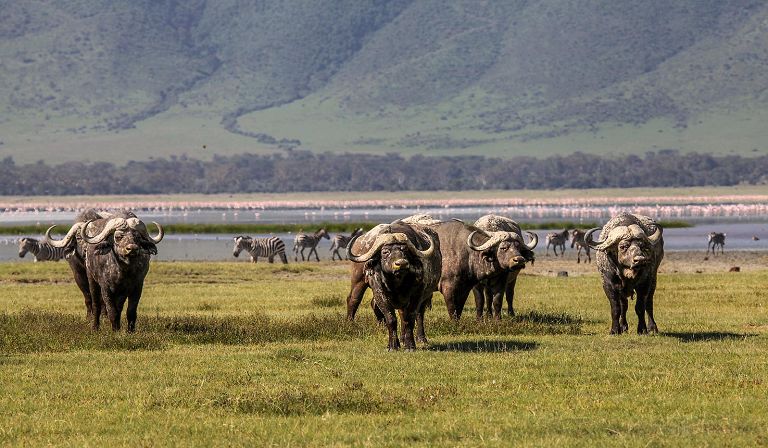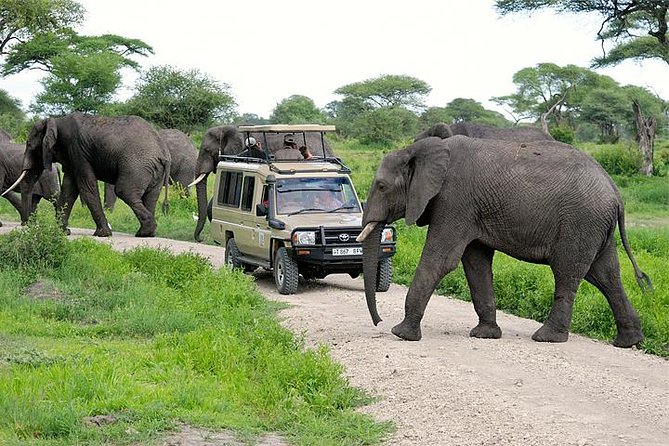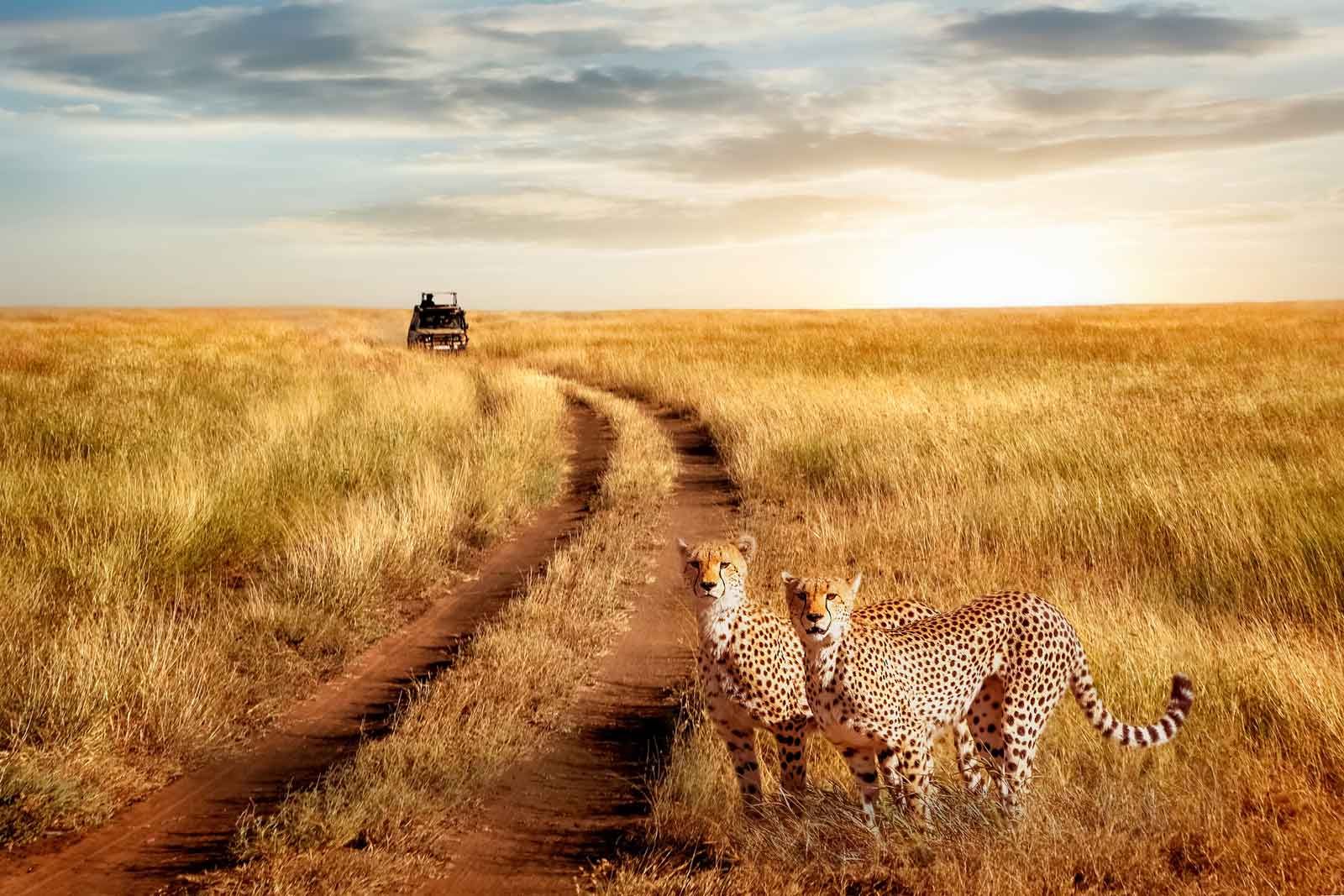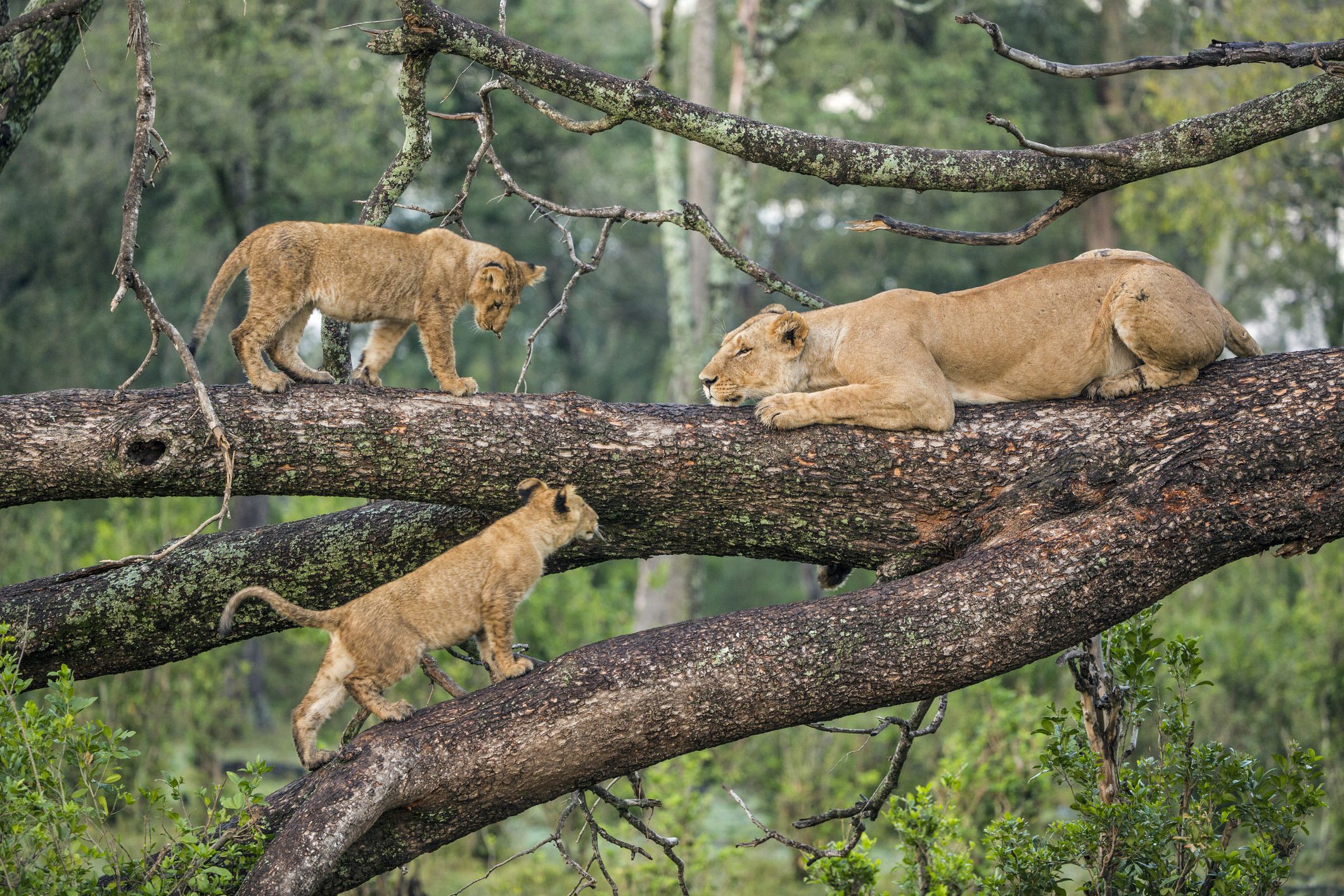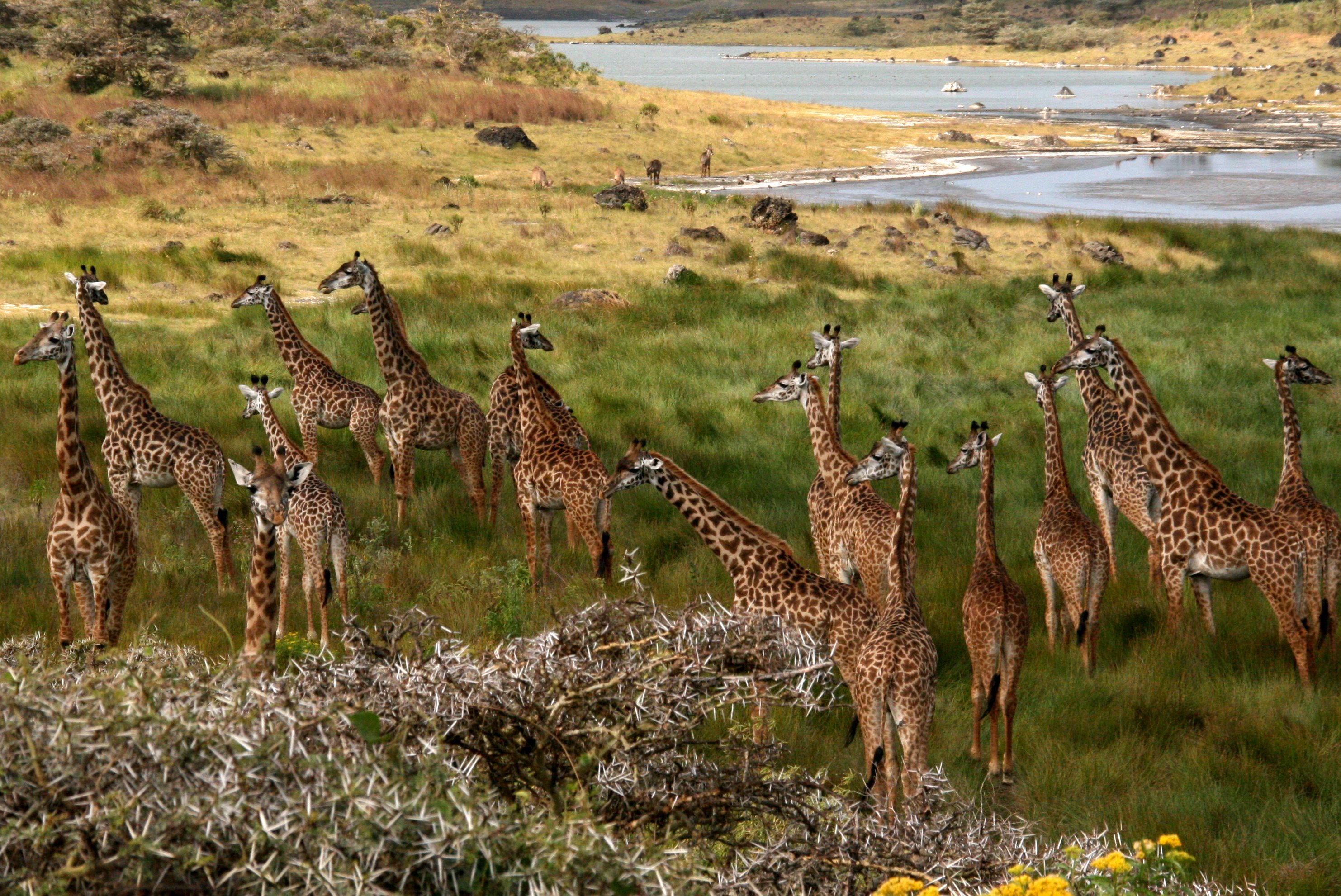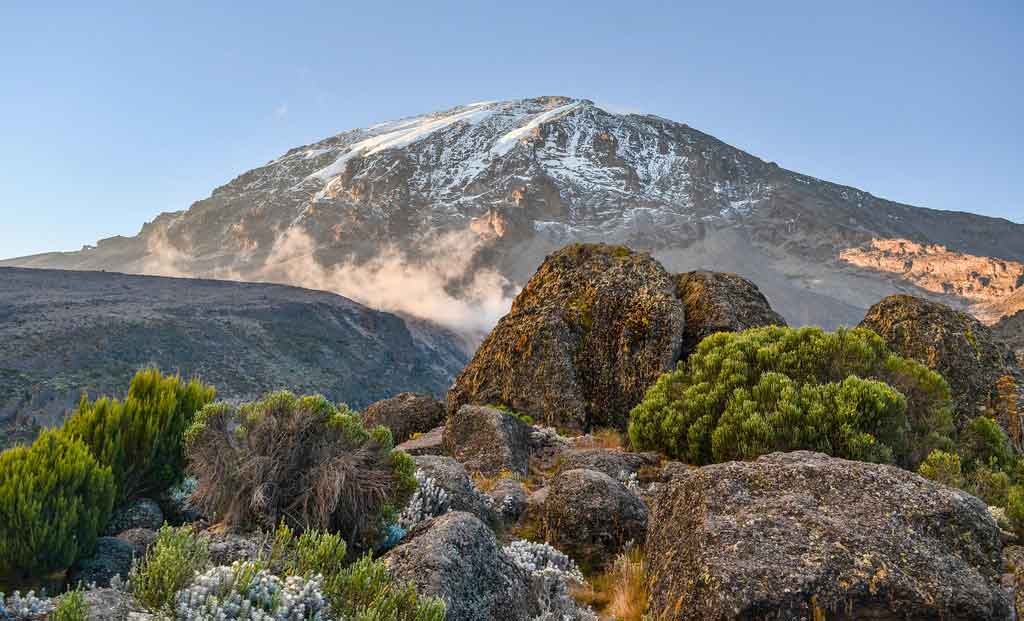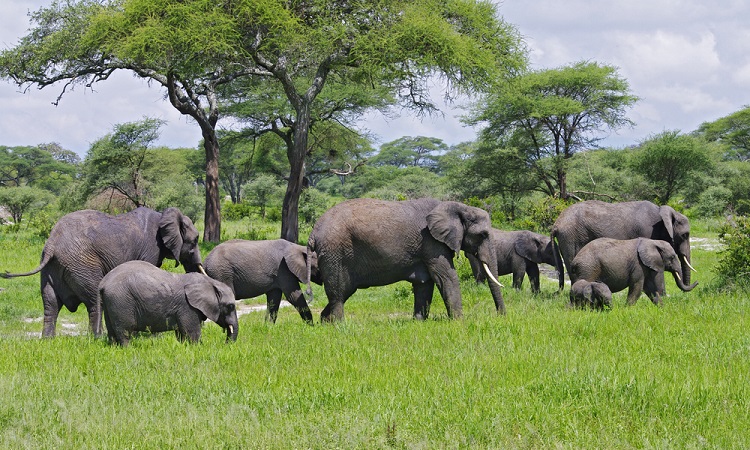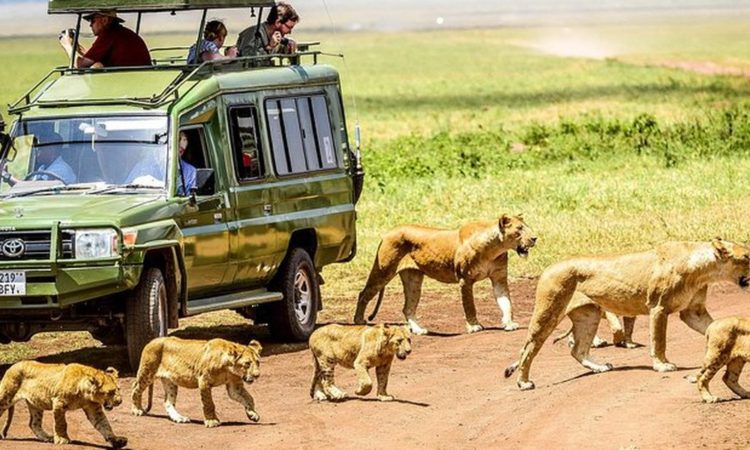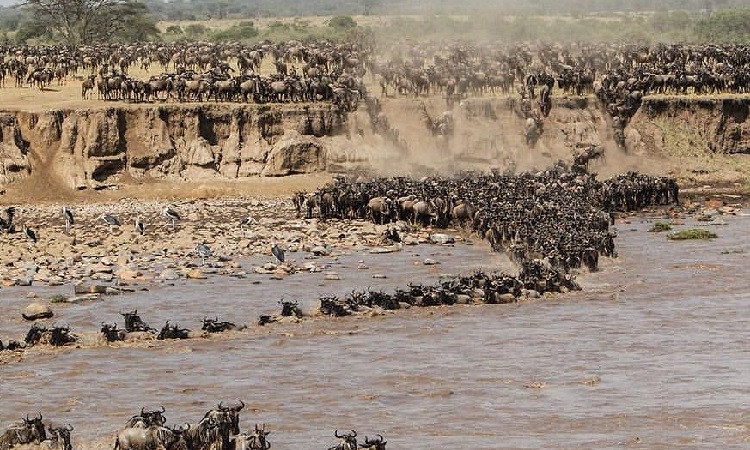Tanzania Natinal Parks
Tanzania is renowned for its extraordinary wildlife and breathtaking landscapes, and its national parks are some of the most famous and biodiverse in the world. Below is an overview of some of the key national parks in Tanzania, each offering a unique experience for wildlife lovers and travelers:
1. Serengeti National Park
Location: Northern Tanzania, near the Kenyan border.
Size: Approximately 14,750 square kilometers (5,700 square miles).
Highlights:
Known globally for the Great Migration, where millions of wildebeest, zebras, and gazelles migrate in
search of fresh grazing land, accompanied by predators like lions and cheetahs.
Famous for its big cat sightings, including lions, leopards, and cheetahs.
Rolling plains and savanna, dotted with acacia trees and baobabs.
Activities: Game drives, hot air balloon safaris, and walking safaris.
2. Ngorongoro Crater Conservation Area
Location: Northern Tanzania, part of the larger Serengeti ecosystem.
Size: The crater itself is about 264 square kilometers.
Highlights:
Ngorongoro Crater is the world’s largest inactive volcanic caldera and a UNESCO World Heritage site.Rich wildlife, including endangered black rhinos, lions, elephants, buffaloes, and gazelles.
A diverse range of ecosystems in a compact area: from forested areas to open grasslands.
Activities: Crater floor safaris, birdwatching, cultural visits to Maasai villages.
3. Tarangire National Park
Location: Northern Tanzania, south of the Serengeti.
Size: Approximately 2,850 square kilometers (1,100 square miles).
Highlights:
Known for its large elephant herds and iconic baobab trees.A mix of woodlands, savanna, and wetlands that attract large concentrations of wildlife during the dry season.
A fantastic place for birdwatching, with over 500 species of birds.
Activities: Game drives, birdwatching, and walking safaris.
4. Lake Manyara National Park
Location: Northern Tanzania, near the Great Rift Valley.
Size: Around 330 square kilometers (128 square miles).
Highlights:
Famous for its tree-climbing lions, a rare behavior seen here.
The park has a diverse range of habitats: from dense forests to open savanna and the alkaline Lake Manyara.
A great place to spot flamingos and other waterfowl, especially during migration.
Activities: Game drives, birdwatching, and visiting the hot springs.
5. Selous Game Reserve (now Nyerere National Park)
Location: Southern Tanzania, bordering Mozambique.
Size: Approximately 50,000 square kilometers (19,300 square miles).
Highlights:
One of Africa’s largest wildlife reserves, known for its pristine wilderness.
Home to a large population of African wild dogs, elephants, hippos, and crocodiles.
A variety of ecosystems, including savanna, woodland, and wetlands.
Activities: Boat safaris, walking safaris, game drives, and fly-camping.
6. Ruinsori National Park
Location: Western Tanzania, near Lake Tanganyika.
Size: Around 2,600 square kilometers (1,000 square miles).
Highlights:
Famous for its dramatic landscapes, rainforests, and rugged mountains.
Home to diverse wildlife, including chimpanzees, monkeys, and various bird species.
A UNESCO World Heritage site, the park offers hiking, trekking, and cultural experiences.
Activities: Trekking, birdwatching, and forest walks.
7. Katavi National Park
Location: Western Tanzania, in the remote southwest part of the country.
Size: About 4,471 square kilometers (1,727 square miles).
Highlights:
One of the most untouched and remote parks in Tanzania, making it ideal for travelers seeking a more secluded experience.
Known for its large hippopotamus populations and birdlife, as well as large herds of buffaloes and elephants.
Vast savannahs, swamps, and seasonal lakes attract many predators.
Activities: Game drives, walking safaris, and boat safaris.
8. Mkomazi National Park
Location: Northeastern Tanzania, near the Kenyan border.
Size: About 3,200 square kilometers (1,200 square miles).
Highlights:
Known for its conservation efforts for the endangered African wild dog and black rhino.
The park's landscape is a mixture of dry savanna and forested hills.
It offers a more off-the-beaten-path experience with fewer tourists.
Activities: Game drives and birdwatching.
9. Gombe Stream National Park
Location: Western Tanzania, on the shores of Lake Tanganyika.
Size: 52 square kilometers (20 square miles).
Highlights:
Famous for its chimpanzee population and studies by renowned primatologist Jane Goodall.
Gombe offers a chance to see chimpanzees in the wild, along with other primates, including baboons and monkeys.
The park is characterized by dense forests, steep hills, and clear streams.
Activities: Chimpanzee tracking, nature walks, and swimming in the lake.
10. Mahale Mountains National Park
Location: Western Tanzania, on the shores of Lake Tanganyika.
Size: Approximately 1,600 square kilometers (620 square miles).
Highlights:
One of the best places to see wild chimpanzees in their natural habitat.
The park is set against a backdrop of stunning mountain landscapes and clear waters of Lake Tanganyika.
Wildlife includes other primates, birds, and unique flora.
Activities: Chimpanzee trekking, hiking, snorkeling, and beach relaxation.
11. Saadani National Park
Location: Coastal region of Tanzania, near the Indian Ocean.
Size: Approximately 1,100 square kilometers (425 square miles).
Highlights:
The only national park in Tanzania with both marine and terrestrial environments.
Visitors can see a variety of animals such as elephants, lions, and giraffes while also enjoying the nearby beaches and ocean views.
A diverse range of birdlife and aquatic species.
Activities: Game drives, boat safaris, and beach activities.
12. Arusha National Park
Location: Northern Tanzania, near Mount Meru.
Size: About 137 square kilometers (53 square miles).
Highlights:
The park features Mount Meru, an active volcano, as well as lush rainforests and grassy plains.
It's home to giraffes, zebras, buffaloes, and monkeys, as well as a rich variety of bird species.
It’s one of the best places to enjoy walking safaris.
Activities: Game drives, walking safaris, and hiking Mount Meru.
